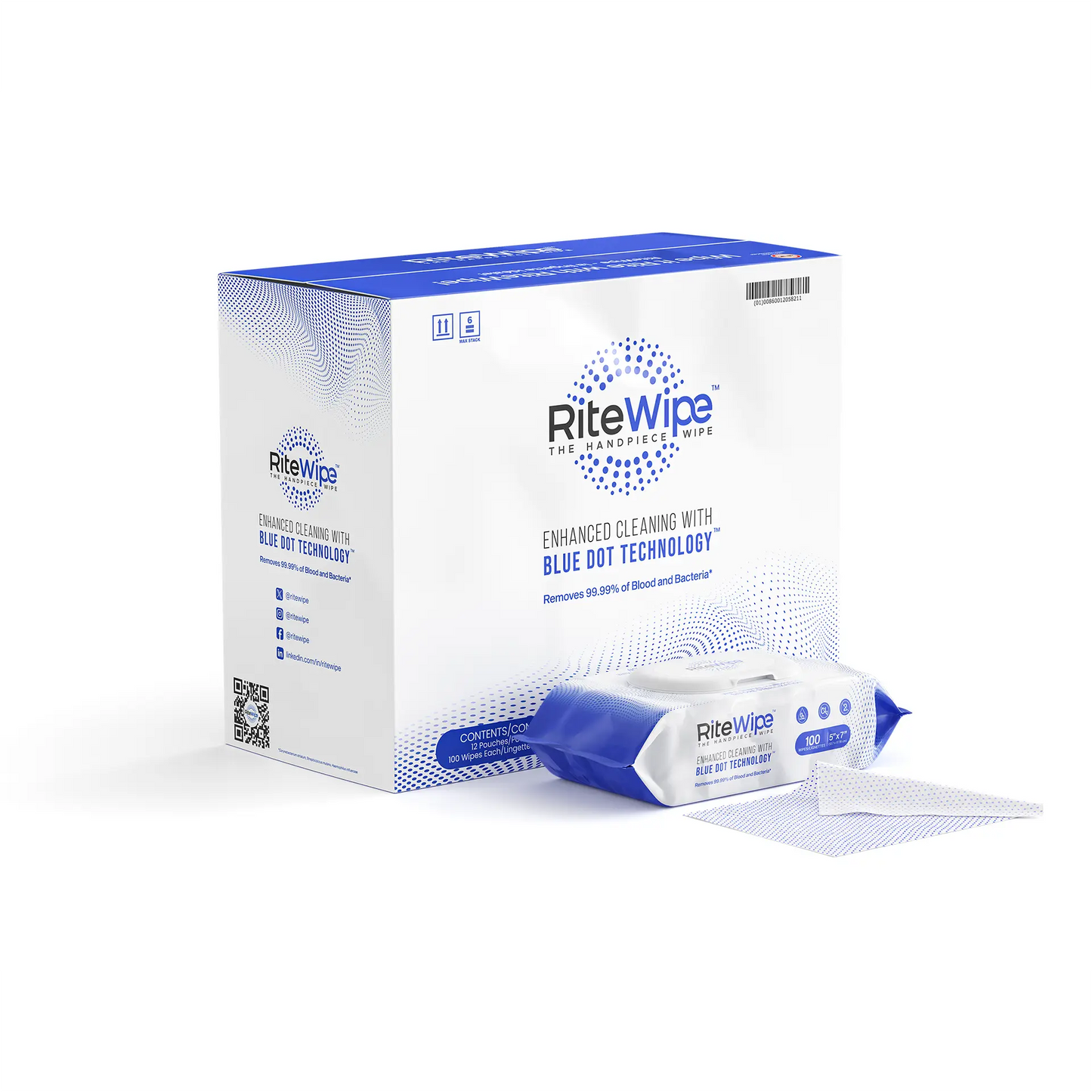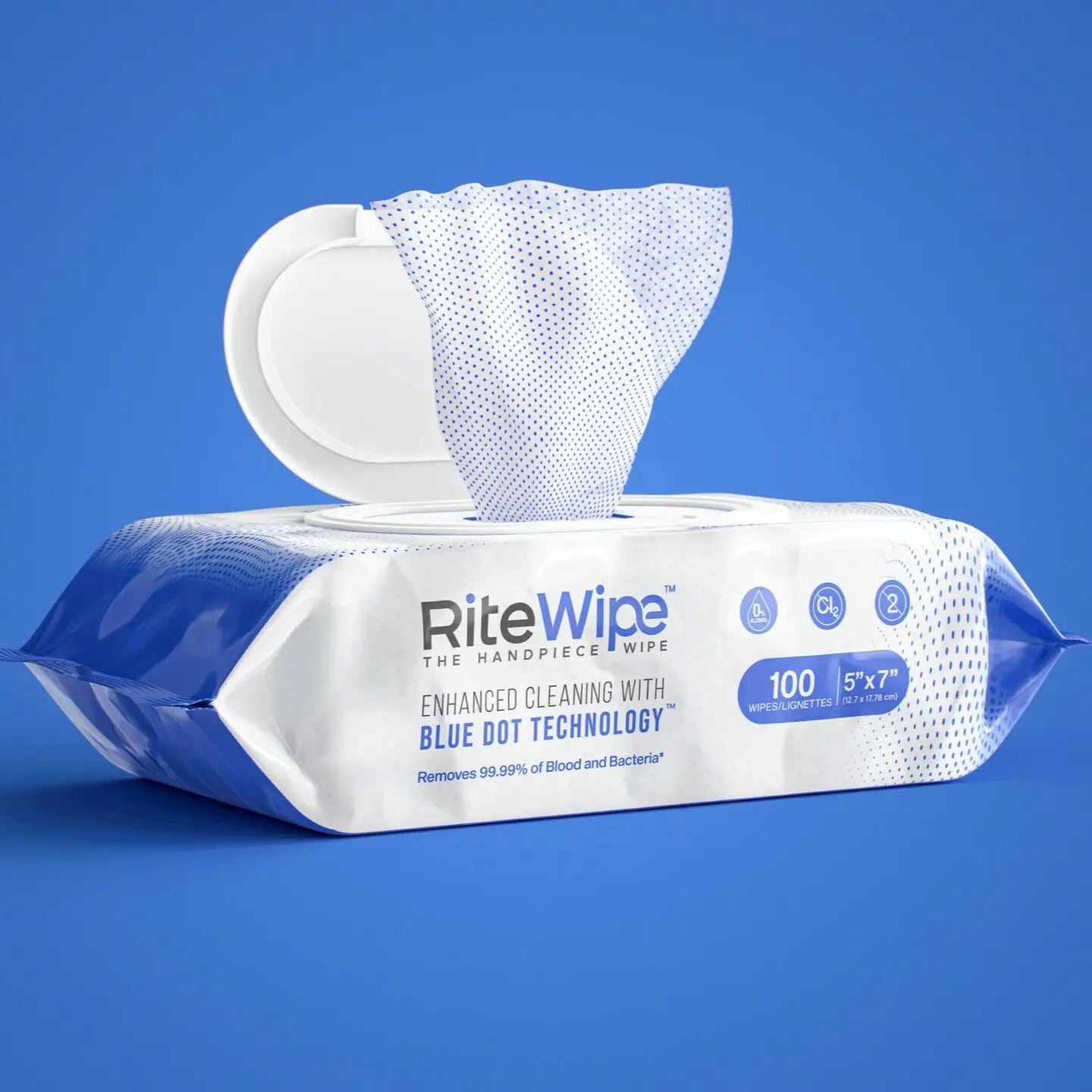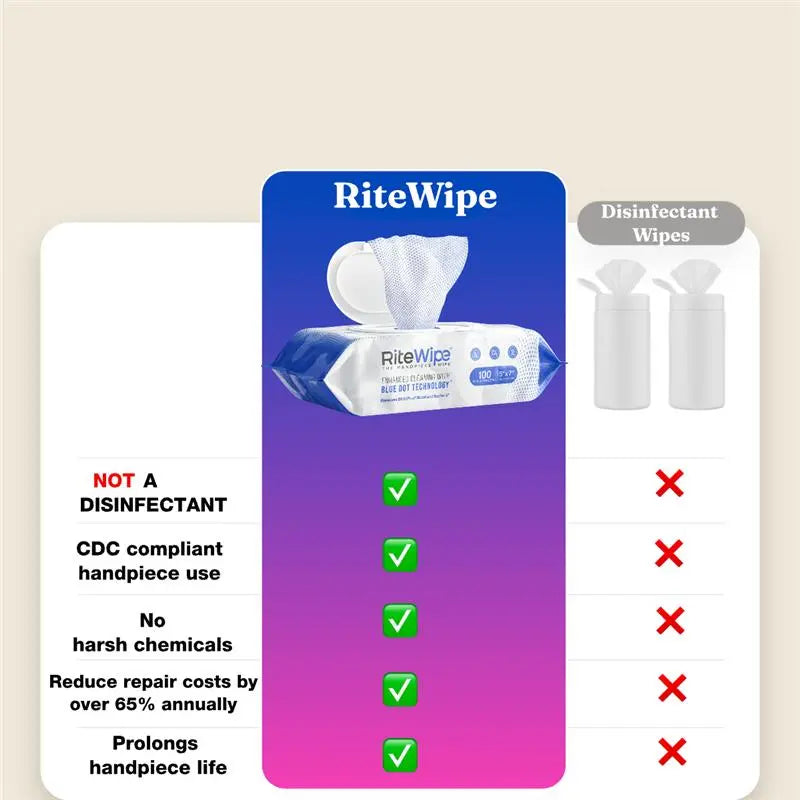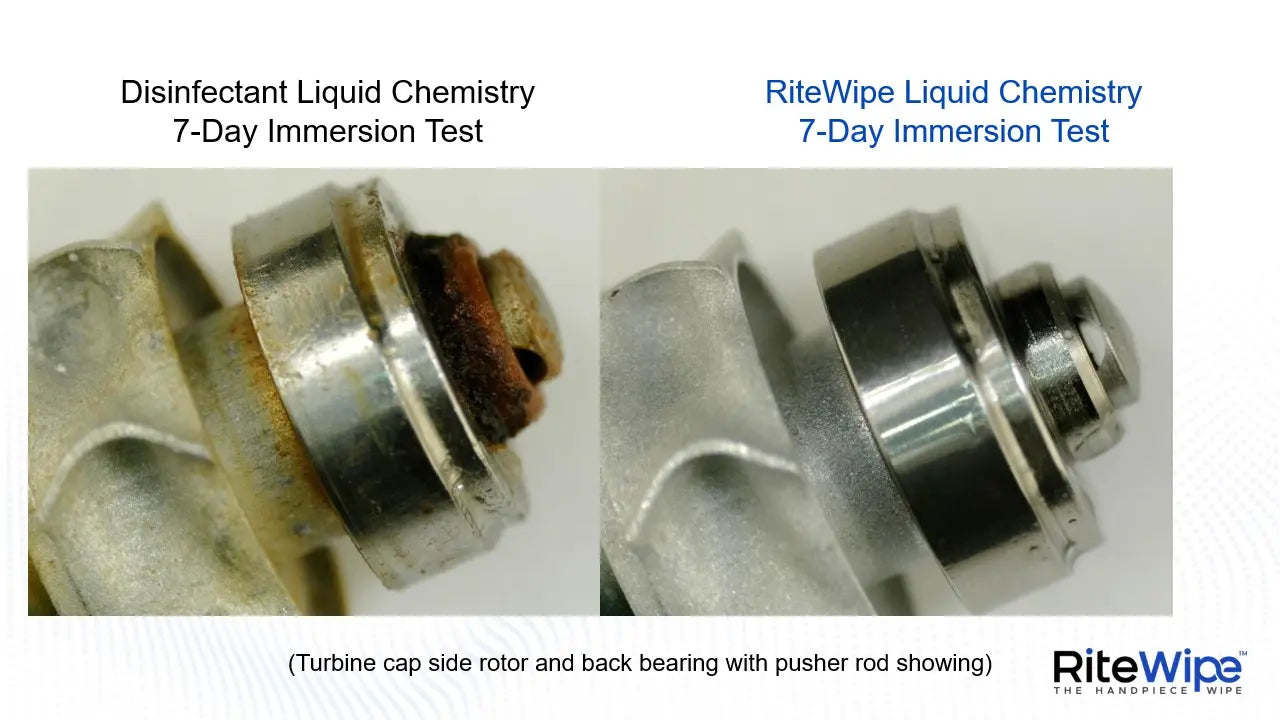Frequently Asked Questions
Collapsible content
Is RiteWipe a disinfectant?
No. RiteWipe does not contain disinfectants and is not intended as a surface disinfectant. Per CDC guidance, instruments must be cleaned—not disinfected—before sterilization. Harsh chemicals in disinfectants, such as alcohols and chlorides, have been shown to cause rust, corrosion, and internal damage to handpieces, while also drying, cracking, and fading upholstery. By avoiding these chemicals, RiteWipe protects your equipment, preserves your upholstery, and safeguards the long-term investment and professional appearance of your practice.
Does RiteWipe replace the autoclave/sterilizer?
No! RiteWipe is the essential pre-sterilization cleaning step, effectively preparing each handpiece or instrument for a successful sterilization cycle.
What is the difference between cleaning vs disinfecting?
Cleaning physically removes blood, bacteria, and other debris, while disinfecting uses chemicals to kill germs. On devices that will be sterilized, disinfecting first can actually make sterilization less effective by drying debris onto surfaces and making it harder to remove. Overuse of disinfectants also fuels antimicrobial resistance. Proper cleaning ensures contaminants are lifted away so sterilization works as intended.
How do I use RiteWipe?
- After handpiece use, remove the rotary instrument from the handpiece using safe methods and discard into an appropriate sharps container.
- Remove the handpiece from the coupling or dental tubing.
- Open the RiteWipe cap and seal to remove the wipe.
- Close the seal, then the cap on the RiteWipe pouch to ensure wipe integrity and cleanliness.
- With the RiteWipe "Blue Dot Technology" facing towards the handpiece surface, wipe the handpiece in a rotational direction around the handpiece, touching all surfaces, starting at the head and moving towards the bottom.
- Rotate the handpiece within the wipe several times until debris and bioburden are no longer visible, paying close attention to the fiber optic lens area (if present), water port(s) area, and uneven surfaces.
How many times can the wipe be used?
RiteWipes are intended for single use only. If used more than once, bacteria and blood may be deposited onto the next device.
Note: Using the same wipe, you may clean two additional handpieces while maintaining 99.99% removal of bioburden.
Please see product IFU for step-by-step instructions.
Can we use RiteWipe on all handpieces?
RiteWipe has been specifically designed to be safe and effective for all handpiece types and materials.
Where else can I use RiteWipe in the operatory?
RiteWipe can be used in place of any general purpose cleaner throughout the operatory on non critical surfaces.
Especially on the following surfaces:
- Upholstery (when bodily fluid is not present)
- End of day cleaning to remove sticky disinfectant residue from ALL surfaces
Is RiteWipe safe?
Yes. The RiteWipe formulation is water-based, alcohol-free, and chloride-free, making it safe for use on sensitive dental instruments without causing rust, corrosion, or internal damage. It has also been reviewed by a certified toxicologist and considered safe for patients and staff, avoiding the irritation and risks that come with harsher disinfectant chemicals. In fact, RiteWipe is over 50 times safer than the most common dental soap and more than 100 times safer than the most common dental disinfectant wipe, providing peace of mind for both equipment protection and everyday clinical use.
Does RiteWipe meet CDC/ADS requirements?
Yes! RiteWipe is the ONLY safe handpiece cleaning wipe that meets the CDC/ADS requirements. Stated here:
"Cleaning should precede all disinfection and sterilization processes; it should involve removal of debris as well as organic and inorganic contamination."
Refer to Cleaning is Critical
What is the purpose of the Blue Dots?
• To serve as microscrubbers, penetrating deep into handpiece grooves to break up and lift tough bioburden.
• The dots also identify the type of wipe RiteWipe is – a handpiece cleaning wipe and NOT as a disinfectant surface wipe.
What does "alcohol-free" mean?
"Alcohol-free" refers to being free of simple alcohols, like ethanol and isopropyl alcohol, that are volatile and typically used in disinfectants, which can damage the internal components.
Why do I need to rinse off the handpiece after RiteWipe use?
Per CDC/ADS guidelines, "after cleaning, instruments should be rinsed with water to remove chemical or detergent residue."
What is the shelf life of RiteWipe?
3 years
RiteWipe
Dental Cleaning Wipes - 100 Wipes (5" × 7")
Share






